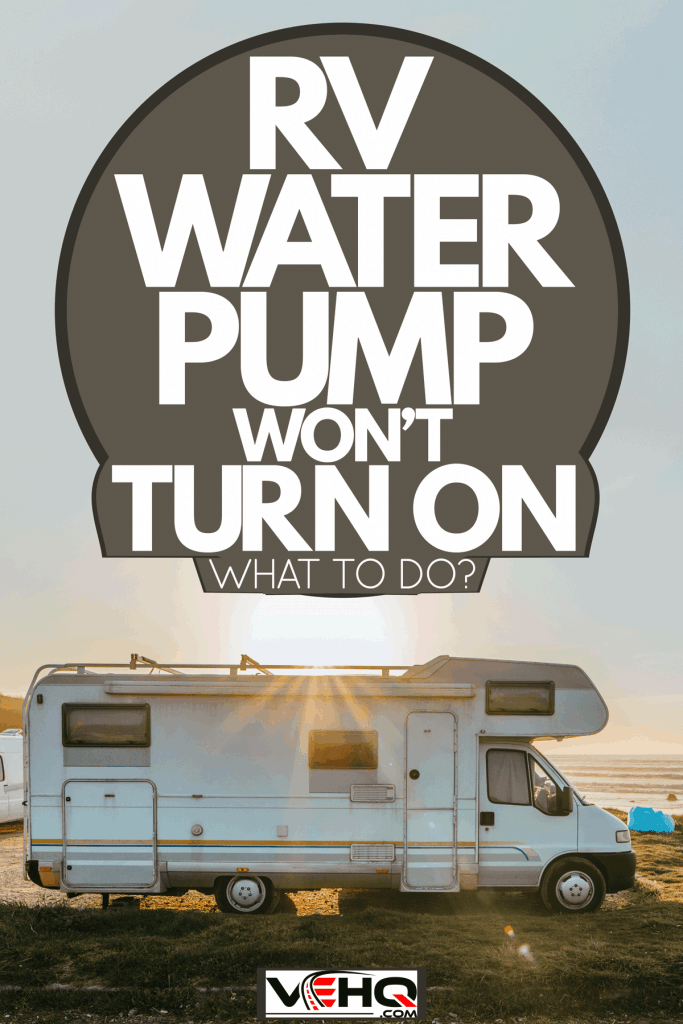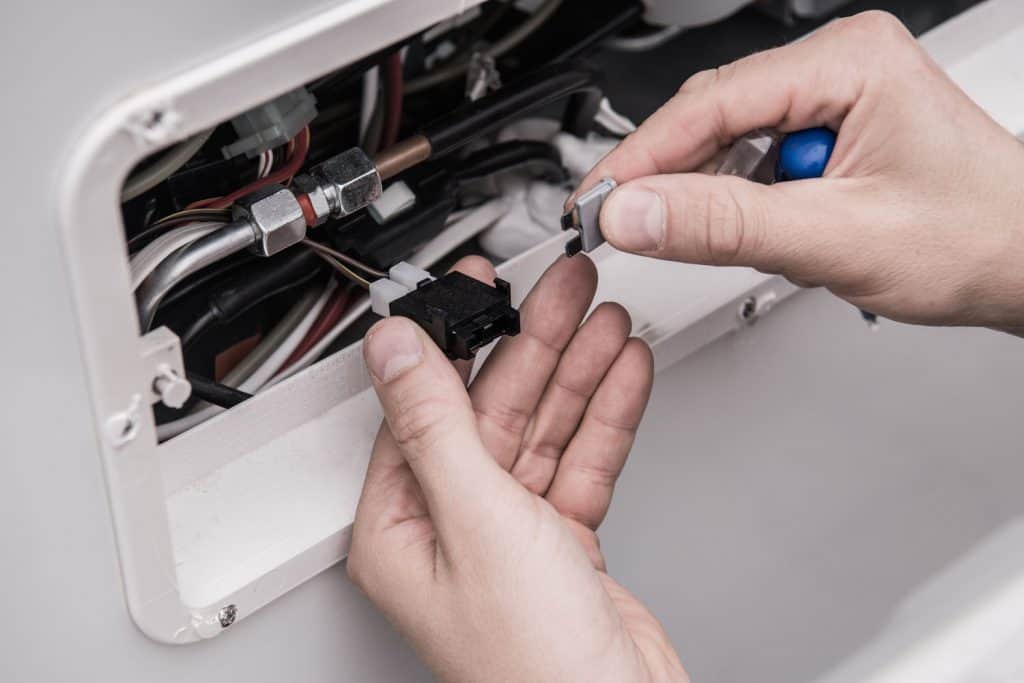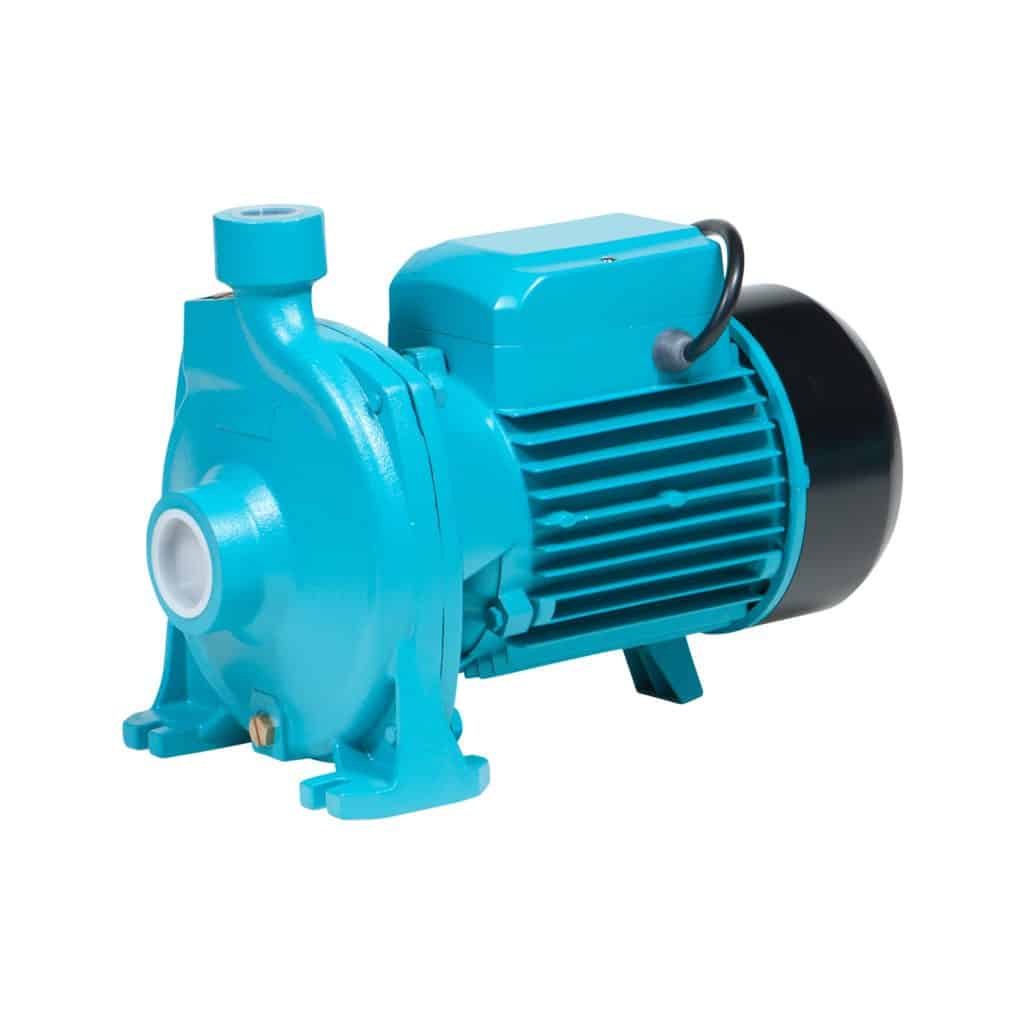RVs provide access to the great outdoors and modern conveniences simultaneously, such as running water. So when your RV water pump doesn’t turn on, a great trip can easily turn sour. To prevent that from happening, we investigated the underlying causes of why RV water pumps won’t turn on and how to fix them.
When your RV’s water pump doesn’t turn on, the problem usually lies with the power supply since motor malfunctions are rare. You should check each section of your RV's electrical system to ensure that the pump is receiving power before buying a new one.
Follow these steps to check your water pump’s power supply:
- Try charging the RV’s battery.
- Check for broken fuses.
- Look for unplugged, loose, or broken wires.
- Check the pump switch for worn parts.
Even luxurious water pumps create noticeable amounts of noise when you turn on the faucet, so listen for the pump to make sure it’s not turning on at all. Keep on reading for instructions on each step, as well as some other water pump issues you might come across during routine maintenance.

How to check your water pump’s power supply

Please remember to turn off the power before handling any wires or other electrical system parts to avoid serious injuries. If you don’t feel comfortable working on your RV’s wiring, call a local RV mechanic or dealership for professional help.
Try charging the RV’s battery
The majority of RV water pumps on the market run on the vehicle’s built-in battery. The battery will drain over long periods between charges, especially in cold weather. If several months have passed since the RV’s last use, you should charge the battery and then try the water pump again. Even if it hasn’t been that long, check the battery first to potentially save some time and effort before moving on to the next steps.
Check for broken fuses
Some of the most common problems RV owner’s face can be narrowed down to a blown fuse. The fuse box’s location and setup will vary depending on your RV's make and model, so check the owner’s manual to find it. Most fuses sport a transparent casing so you can see their internal parts. If the connecting piece between the two sides of the fuse appears broken (or looks so burnt that you can’t tell), then you should replace it and try the pump again.
Look for unplugged, loose, or broken wires
Like all technology, the water pump might suffer from loose or unplugged wires. You can use a voltmeter to make this step a lot easier. Check for power starting from the fuse box to the water pump, including any stops in between. Look for any spots where the voltmeter stops reading power to narrow down your search area. Remember to turn the power off before handling any wires.
Click here to check out KAIWEETS Digital Voltage Multimeter on Amazon.
After the voltmeter check, inspect the offending area for loose connections or broken wires. To save you some extra headaches, you might want to replace any wires or pieces that look worn down while you’re already in the process of checking them. You’ll want to examine the grounding connection to the pump as well. If the pump still doesn’t turn on after you’ve determined that the power successfully reaches it, you might need to buy a new pump. For more information on RVs' electrical systems, check out our guide detailing what to do if your 12-volt power system won’t work.
How Do You Know If Your RV Water Pump Is Bad?

RV water pumps can experience other issues besides not turning on. Here are some common symptoms to look out for that means there’s something wrong with your pump:
- Makes excessive noise (beyond the normal noisiness)
- It kicks on and off when you’re not using water
- Cycles over and over
None of these signs necessarily mean you need to replace your water pump; these issues can stem from other parts of your RV’s water system like the fittings, hoses, or wires. Check all connections and other equipment hooked up to the pump before replacing it; you don’t want to buy a new pump when the problem was a cheap hose.
How Long Does an RV Water Pump Last?
According to some RV specialists, an RV pump can last up to 10 years with the proper care and maintenance. Your pump will naturally see some wear and tear, but you can avoid hefty damage to the pump with some easy tips. Don’t leave RV’s water system exposed to cold weather or run it without water in the tank. Other issues like corrosion and build-up can impact the lifespan of your pump, so you’ll want to clean and sanitize the pump periodically.
Below, we’ve included a video hosted by Mark Polk at RV 101 to show you some basic pump maintenance tips like changing the filter.
Do You Need to Prime Your RV Water Pump?
Yes, water pumps need to be primed, and you should check that your water pump is primed before leaving for any RV trips. Priming a pump means adding water to build the necessary amount of pressure for it to work. Most modern water pumps can self-prime themselves, so all you need to do is refill the RV’s fresh water tank.
For older pumps, you might need to manually prime it. Your owner’s manual should include instructions, but here’s a basic outline of how to prime your pump:
- Disconnect the waterline (intake) from the pump
- Connect a hose (made for drinking water) to the pump or alternate intake valve
- Pour potable water (around 12-16oz, varies depending on the pump) into the hose/valve
- Plug the hose/valve with its cap or the end of your thumb
- Turn on the pump for a few seconds, then turn it back off (if you’re using your thumb to plug the hose, let the water build-up and hit your thumb before switching it off)
- Reconnect the water line to the pump
- Turn on a faucet (cold water) and switch the pump on
- Water should flow out within a few seconds; let it run for a bit, then turn it off
You might need to release the air in each faucet, toilet, and shower. Run each water appliance one at a time before turning it off and moving to the next one. When the pump only runs when you turn on a faucet, it’s ready to go.
Can You Leave Your RV Water Pump On?
You can leave your water pump on in some situations. Most water pumps will only activate when you use water unless there’s a problem. For the most part, RV owners go by their personal preference for when to shut off the pump. Some owners leave it on while hanging out around the RV, and others turn it on only when they need water. The water pump shouldn’t be left on in a handful of situations, like during maintenance, when the water tank is empty, and when you’re driving.
Now that you know how to diagnose and fix power supply problems for your RV’s water pump, you can take that overdue vacation you deserve. If you’d like to know more RV tips, check out our RV freshwater maintenance guide for more information on how to take care of your water system.

